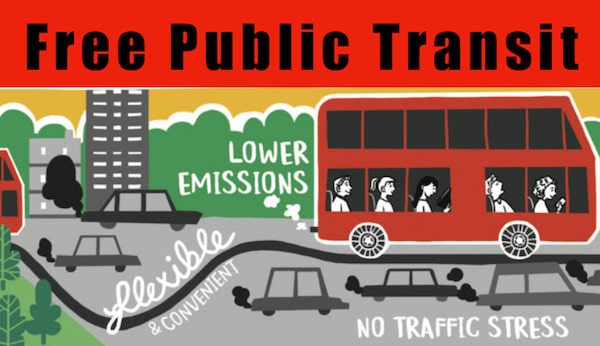Editor’s Summary: This essay explores the feasibility and potential impacts of implementing free public transportation systems. By analyzing environmental, social, and economic benefits, as well as the challenges of funding and infrastructure, the study aims to provide a comprehensive understanding of how fare-free public transit could alleviate urban issues like congestion, pollution, and social inequality. The discussion emphasizes the need for further research and strategic planning to harness these benefits effectively.
The Case for Free Public Transportation: An Analysis of Potential Benefits and Challenges
Abstract
This study examines the proposition of implementing free public transportation systems. By analyzing potential environmental, social, and economic impacts, we explore the feasibility and desirability of eliminating fares for public transit. The research aims to provide a comprehensive overview of the benefits and challenges associated with free public transport, considering its effects on traffic congestion, pollution, social equity, and urban mobility.

1. Introduction
Public transportation plays a crucial role in urban mobility and sustainability. However, the cost of these services often presents a barrier to widespread adoption. This paper investigates the potential outcomes of implementing a free public transportation system, examining its impacts on various aspects of society and the environment.
2. Potential Benefits of Free Public Transportation
2.1 Environmental Impact
One of the primary arguments for free public transportation is its potential positive environmental impact. Increased use of public transit could lead to:
- Decreased traffic congestion
- Reduced noise pollution
- Lower greenhouse gas emissions
These benefits align with global efforts to combat climate change and improve urban air quality. By incentivizing the use of public transport over private vehicles, cities could significantly reduce their carbon footprint.
2.2 Social Equity
Free public transportation could address issues of social equity by:
- Providing mobility options for low-income individuals and families
- Improving access to employment opportunities
- Reducing transportation costs for workers, particularly those in low-wage jobs
For example, families who currently struggle to afford public transport fares might have better access to essential services and economic opportunities if these barriers were removed.
2.3 Economic Benefits
While implementing free public transport would require significant investment, it could yield economic benefits such as:
- Reduced need for road infrastructure expansion
- Decreased healthcare costs associated with air pollution
- Improved worker productivity due to reduced commute times
Additionally, the money saved by individuals on transportation costs could be redirected into local economies.
2.4 Social Cohesion
Free public transportation might foster greater social interaction and community cohesion. Observations from cities with free transit zones, such as Melbourne, Australia, suggest that this policy can contribute to a more positive urban atmosphere and increased social connections among residents.
3. Challenges and Considerations
3.1 Funding
The primary challenge in implementing free public transportation is securing sustainable funding. Options might include:
- Reallocation of existing transportation budgets
- Increased taxes or fees on private vehicle use
- Federal or state grants for sustainable urban development
3.2 Capacity and Infrastructure
A significant increase in ridership could strain existing public transportation infrastructure. Cities would need to invest in:
- Expanded bus and train fleets
- Improved transit routes and frequency
- Enhanced maintenance and cleaning services
3.3 Potential for Abuse
Free services might lead to misuse or overuse of the system. Strategies to mitigate this could include:
- Implementation of user registration systems
- Limiting free services to specific times or routes
- Educating the public on responsible use of public resources
4. Conclusion
While implementing free public transportation presents significant challenges, particularly in terms of funding and infrastructure, the potential benefits to the environment, social equity, and urban livability are substantial. Further research is needed to quantify these benefits and develop sustainable models for implementing fare-free public transit systems.
As cities worldwide grapple with issues of congestion, pollution, and social inequality, the concept of free public transportation merits serious consideration as a potential solution to these interconnected urban challenges.
Work Cited
1.“Climate Change and Air Quality.” Environmental Protection Agency. Retrieved from https://www.epa.gov/climate-change
2.“Public Transportation and Social Equity.” Urban Institute. Retrieved from https://www.urban.org/research/publication/public-transportation-social-equity
3.“Economic Impact of Public Transportation Investment.” American Public Transportation Association. Retrieved from https://www.apta.com/research-technical-resources/research-reports/economic-impact-of-public-transportation-investment/
4.“Free Tram Zone.” Public Transport Victoria. Retrieved from https://www.ptv.vic.gov.au/more/travelling-on-the-network/free-tram-zone/
5.“Funding Urban Public Transportation: Case Studies from Asia.” International Transport Forum. Retrieved from https://www.itf-oecd.org/funding-urban-public-transportation-case-studies-asia